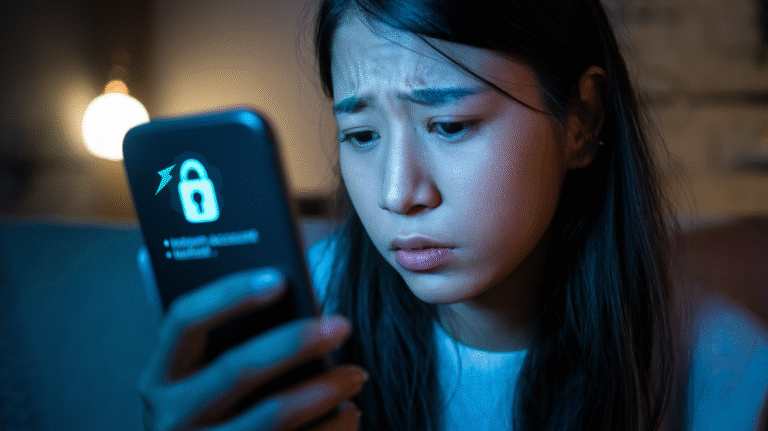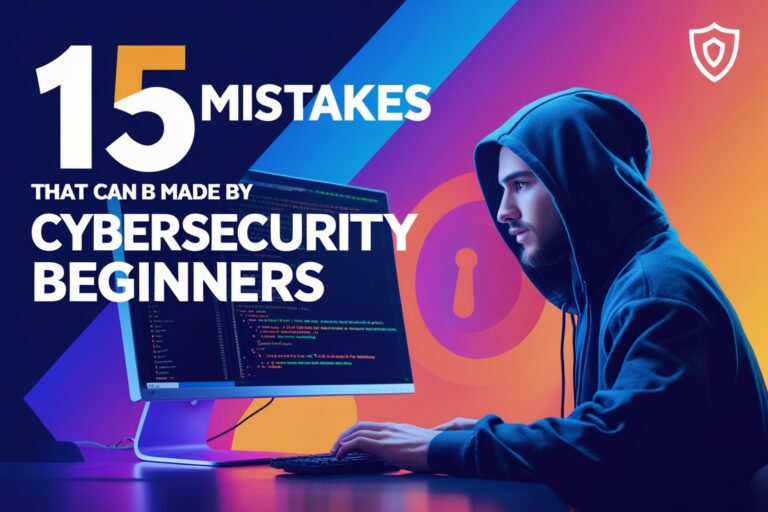The panic is real. Whether you’re completely locked out or given pause by something fishy, any time you know your account is compromised is a race against the clock. Hackers may use your profile to scam your followers, hijack your identity, or even demand a ransom for your account. But not to worry—you’re not just a sitting duck in this situation.
In this walkthrough, we’ll provide 5 vital steps to help you recapture your hacked Instagram account and make it even more secure. From spotting the early warning signs to taking precautions and follow-up action, you’ll find out just what to do when confronted with this fast-growing digital menace. Let’s take your account back and make sure it’s never back in those unscrupulous hands again.
Table of Contents
Step 1: Recognize Signs of a Hacked Instagram Account
A. Inability to log in despite correct credentials
One of the telltale signs of a hacked Instagram account is when you suddenly can’t log in despite entering your correct username and password. This happens because hackers typically change your login credentials immediately after gaining access to lock you out. If you find yourself repeatedly trying your usual password with no success, it’s a definitive indication that someone else may have control of your account.
B. Unauthorized password reset emails
Pay close attention to your inbox. If you receive password reset emails from Instagram that you didn’t request, someone is likely attempting to gain access to your account. These notifications serve as an early warning system that your account is being targeted. Always verify if these emails are legitimate Instagram communications and not phishing attempts designed to steal your information.
C. Changes to the account email without your permission
Hackers often change the email address associated with your Instagram account to maintain control. If you receive a notification about an email change you didn’t initiate, this is a serious red flag. Instagram typically sends confirmation emails when account details are modified, so keep an eye out for these alerts in your original email inbox.
D. Suspicious login attempt notifications
Instagram’s security system sends notifications when your account is accessed from an unfamiliar device or location. If you receive alerts about login attempts from unknown locations or devices—especially from foreign countries you’ve never visited—it’s a strong indication that someone is trying to breach your account.
E. Unusual messages sent to followers
Your followers might notify you about receiving strange messages from your account, such as spam links or phishing attempts. These unauthorized communications are often designed to spread the hack to other accounts. If friends mention receiving odd direct messages containing suspicious links that you know you didn’t send, your account has likely been compromised.
Now if you want to recognize a hacked Instagram account, it’s crucial to act quickly. In the next section, we’ll explore how to “Act Fast When You Still Have Access” to minimize damage and restore your account security before the situation escalates further.
Step 2: Act Fast When You Still Have Access
Now that you know how to recognize a hacked Instagram account, here’s what to do next, assuming that you still have access. And there are things that you can do immediately — that the hacker could disable, but will likely gain you more time and more security than if you waited until you were locked out.
A. Verify email and phone information
Start by verifying that your email address and phone number are still correctly associated with your account. Hackers also tend to alter this information to keep it under control. Check your contact info in your Instagram settings. If they have been altered, update them at once to reflect the correct details so you can receive security notices and password reset emails.
B. Log out of all active sessions
Hackers could be currently signing in and using your account from other devices. Under the security settings for your Instagram account, you can locate a “Login Activity” section, and you should check the devices that are using it at the time. If you see strange places or devices, click “Log Out” for each suspicious session. To be extra sure, select “Log Out of All Sessions” to make everyone have to sign in again.
C. Set a strong, memorable password
Make up a password that is hard to guess and unique to Instagram. Don’t reuse your passwords across platforms, as data breaches on other sites can leave your Instagram open to attack. One option is to use PASSWORD MANAGER to create and store strong passwords. Your password should be at least eight characters, and you should use a combination of upper and lower-case letters, numbers, and symbols for it too.
D. Enable two-factor authentication
2FA is an important second layer of security for your account. Once turned on, Instagram will ask for both your password and a verification code sent to your phone or authentication app when logging into your account from an unfamiliar device. This greatly lessens the chance that unauthorized access will occur even if your password is stolen.
E. Review and revoke access to suspicious linked accounts and third-party apps
See which third-party apps have access to your Instagram account. These connections are frequently exploited by hackers as backdoors. Check all connected apps in your settings and remove those that you don’t recognize or haven’t used in a while. You should also look for any connected third-party (Facebook and other social media services, for example) accounts that seem unfamiliar; if you find some, remove them.
Do both of those tasks, and your account will be safer for it. If, though, you’ve been locked out of access to your account entirely, you’ll need to follow different recovery steps that are outlined in the next section on recovering a hacked Instagram account.
Step 3: Recover a Hacked Instagram Account
But what if they’ve already taken the account over and you no longer have access to it? But have no fear, because there are specific things that you can do to recover your hacked Instagram account, even if you can’t log in.
A. Use Instagram’s Official Recovery Tool
If you can’t open your account for one reason or another, Instagram has an official recovery process. Go to the Instagram help page select “Hacked Instagram account” and click on the “Visit this page” link. This is the start of Instagram’s recovery process. For the quickest results, try doing this from a device and a place you frequently log into Instagram from, as this can help prove your identity.
B. Look for Emails from Instagram regarding Security
When you make substantial changes to your account, Instagram automatically sends notices to the original email address of your account. Search your inbox (and your spam folder) for emails from the address se******@************am.com that may signal unauthorized changes to your password, email, or phone number. These emails can also undo the changes if you did not make them.
C. Ask for a Login Link or Security Code to Your Linked Email
If your email address is still associated with your account, you can request a login link or security code. Enter your username or phone number on the login page and choose “Forgot password?” Instagram will then send you recovery instructions to the email or phone you’ve connected. This is the best solution, provided the hacker hasn’t altered your recovery information.
D. If necessary, send a video selfie as an identification verification
For personal photo accounts, you may need to submit a video selfie to verify your identity on Instagram. This face-verifying step cross-checks your selfie with photos on your account to verify you as the rightful owner. The verification can take up to 2 business days, so be sure to be patient in this step.
E. Reach Out to Instagram Support Via the Help Center
If common recovery efforts did not work, contact Instagram using their Help Center. Some specific types of professional accounts, especially those promoting, may have specific support options in some locales. But keep at it, as reported success with support and its response time is variable.
Once these recovery steps are done, figure out how your account got hacked and make sure it doesn’t happen again. The mode of attack used — phishing, malware disseminating a third-party app, or another potential software flaw — is important to understand so you can better secure your account in the future.
Step 4: Identify How Your Account Was Compromised
Now that you’ve gone through the process of regaining access to your locked-out Instagram account, it’s important to know how your account was compromised in the first place. Knowing where the vulnerability lies enables us to stop similar hacks in the future.
A. Fake websites and messages as part of a phishing attack
Phishing is still the most prevalent way attackers steal Instagram accounts. These attacks usually take the form of counterfeit websites designed to look like Instagram’s login page or direct messages with sketchy links. Hackers immediately harvest your login details when you provide your user credentials on these fraudulent websites.
B. Third-party platform breaches due to the reuse of passwords on other sites
If you have the same password for multiple sites, an attack on one service can give attackers access to your Instagram. According to recent numbers, many hacked Instagram accounts happened long after similar data breaches elsewhere. You can see if your credentials have been compromised by visiting the Have I Been Pwned website, which you likely heard about following Instagram’s recent data breach that exposed millions of users’ contact information.
C. Malware on your devices
Remote keyloggers and other malware installed on your devices could be recording your keystrokes, thus getting access to your Instagram password as you type it. This malware often gets into gadgets through downloaded apps from unknown sources or infected websites. Protective measures must be taken, including anti-spyware applications and not using third-party keyboard apps.
D. Third-Party Apps, Connected Vulnerabilities
Third-party apps also contain potential risk vectors and can be exploited to breach the API. The use of third-party apps that are connected to your Instagram account can lead to security vulnerabilities. Hackers use these connected apps’ vulnerabilities to infiltrate your account without permission. In another time and place, now, the security disasters have revealed how API attacks have compromised access to user accounts and the necessity of regularly auditing connected apps.
E. Access from ex-friends or acquaintances
And sometimes the problem is not technical, but personal. Someone in your circle of contacts — an ex-partner, a friend, or an acquaintance — may have retained your account login.
Now that you have a better sense of how your account was compromised, it’s time to get proactive and secure your account. In the next part, we will get into all the steps that you can take to avoid being hacked in the future and secure your Instagram account.
Step 5: Strengthen Your Account to Prevent Future Hacks
Now that you’ve figured out how your account was compromised, let’s work on securing your Instagram account and keeping it from getting hacked again. Being proactive in keeping control of your social media accounts is crucial.
A. Generate strong, random passwords
Make all your passwords a random mix of letters, numbers, and special characters to help thwart would-be attackers.
The most important thing anyone can do to protect themselves is to employ strong, unique passwords. You might want to use a password manager such as LastPass or 1 Password to create and store hard-to-break passwords. These can be random letters, numbers, and special characters that are virtually impossible to guess. Also don’t forget to change your passwords regularly, and never use the same one more than once.
B. Turn on two-factor authentication
Two-factor authentication (2FA) on Instagram gives an added layer of security, in that it requires more than just your password. To enable this feature:
- In your Instagram app, head to Settings
- Select See More in the account center and click on Password and Security
- Tap on Two-Factor Authentication
- Select text message validation or an authentication app (for example, Google Authenticator).
- This added level of protection means that even if your password is compromised, your account is likely to remain safe from any unauthorized access.
- Check login devices and activities regularly
Keeping an eye on your account’s login activity can help you to spot suspicious activity early. Instagram’s “Login Activity” feature tracks recent login attempts and the devices that have accessed your account. Be sure to monitor this section and report any unauthorized access attempts. If you see something you don’t recognize, just secure your account and change your password.
C. Update contact details for recovery purposes
Confirm your contact email and phone number under Settings > Account have not changed before requesting a security code. You’ll need these to recover your account if you ever get locked out. With up-to-date recovery information, Instagram can confirm your identity and assist you in regaining access to your hacked Instagram account.
D. Practice good cyber hygiene with links and messages
Be cautious of being phished in private messages. Before you click on links, check the sender’s history and look out for any suspicious requests. Real Instagram messages do not ask you for your password. Use Instagram as well as other reporting tools to report a potential scam, and stop sharing any personal or sensitive data on the platform. Keep abreast of developing scams to avoid becoming a victim of new schemes.
Conclusion
It can be stressful to lose control of your hacked Instagram account, but if you follow these five steps, you’ll be able to get back in control in no time. Remember that time is of the essence—whether you’re being threatened with access or have been locked out entirely. Once you regain access to your account, look into how the compromise happened so you can avoid making similar breaches in the future.
Two-factor authentication, strong and unique passwords, and regularly checking your security settings are the best ways to avoid getting hacked. Following the preventive measures in this guide will help you lower the chances of another hack. Don’t wait until a security issue comes up to act — protect your Instagram now by sharing these tips on “recovering hacked Instagram accounts” with friends and family so they also know how to stay safe.









